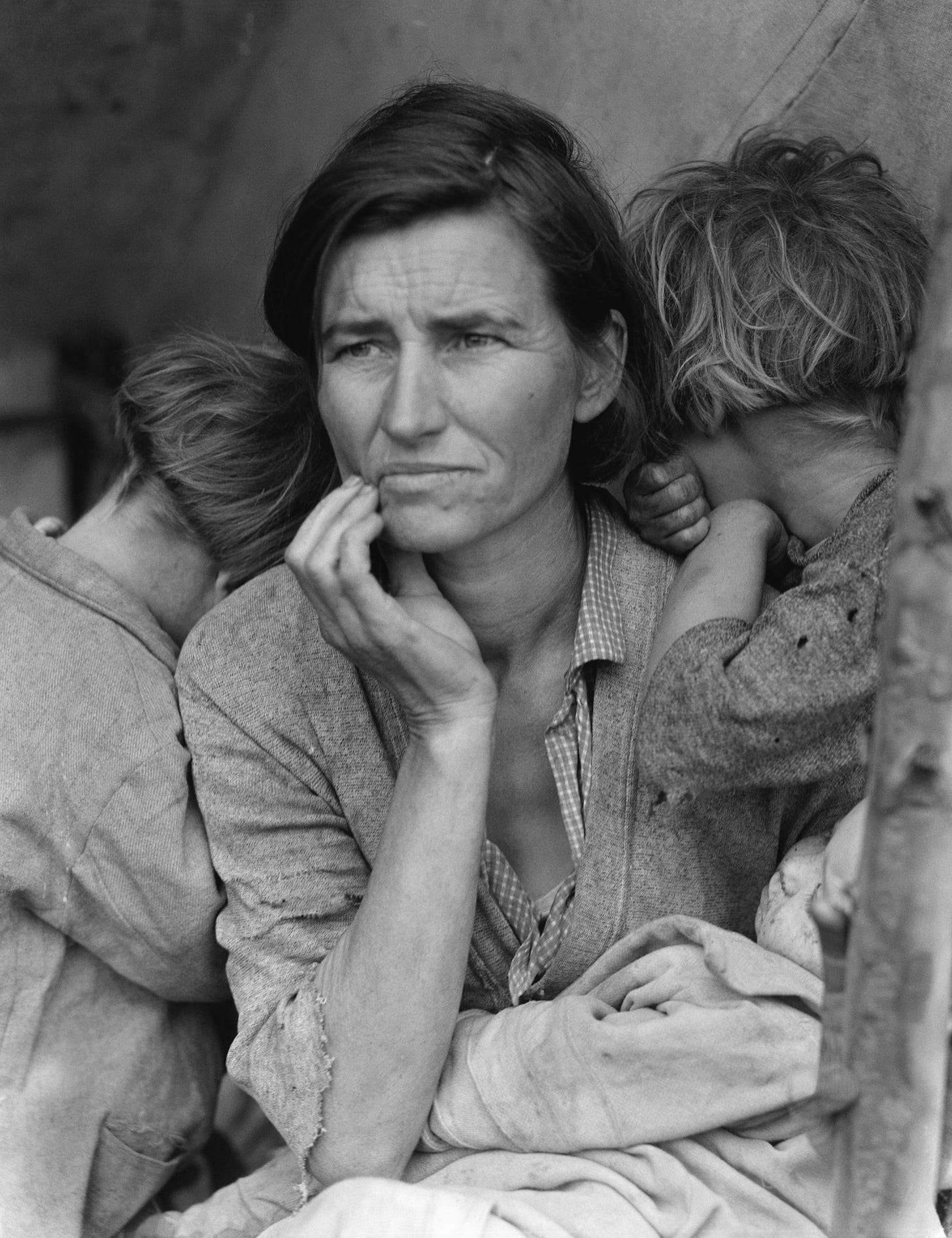What do we owe to those photographer pioneers who paved the way for the rest of us? It's a question I asked myself after visiting the restrospective of Dorothea Lange's images at the National Gallery in Washington, D.C.
I've been an admirer of Lange's work since late childhood, when my photographer father took me to exhibitions in New York City. I constantly refer back to her seminal work, her ability to transport us to the people, places and conditions they faced before, during and after the Great Depression.
It's the Print
I could spend pages boring you with details about this incredible woman who competed and succeeded in a world dominated by men. Books have been written about her work (see the prize we are offering to Paid subscribers, below). Her field portraits of people shown in those books are indeed stunning. Galleries of her work posted online give the viewer an appreciation of her work.
But, there is absolutely no way her work can be properly appreciated except by seeing her prints on a gallery wall. I say that for many reasons. I stood back several times in the National Gallery watching people of all ages as the crowd flowed through the exhibition.
The noise level in the halls immediately outside the exhibition gave way to whispers and silence as the people stopped before her work. I saw many people spend several minutes before each of her prints. Couples pointed out details to each other. Parents explained to their children the significance of what they were seeing.
There are other reasons for admiring Lange's prints. First, of course, is her fanatical attention to detail. Contrast is artfully applied, composition flawless, tonality parsed out as would a fine art painter.
Standing before a print of a notorious labor contractor who took advantage of the field workers, she toned down the eyes under his hat brim in a way that radiated menace. That one image said a thousand words.
Lange was also known to play with the presentation of her prints. Presentation is an important part of showing and complementing one's work, something we emphasize in our fine art printing and framing workshops. There is a fine line between effective presentation and ones that distract from the image's story. Lange experimented with tiny prints with large mats, even tiny matted and framed dyptichs. But all her work was tastefully framed.
In one of her most iconic prints, titled "Migrant Mother", I have always found it painful to see the anxiety in the mother's face as she looks into the distance, her two girls nestled into her neck, yet looking away from the camera, a newborn secure in her arm.
I recall a few decades ago attending a gallery owners auction. Up for sale was a signed print of "Migrant Mother". I wanted to buy that print so badly I returned two days later for the auction, so full of hope I now smile at the memory. When the bidding opened at $50,000 I was stunned. Now I recognize that whoever won that auction recognized the genius of this incredible photographer.
Yes, we have the blessings and curses of the Internet today. By all means, invest time in studying the masters of our art. But also invest the time to visit gallery shows of their work. It's a smart investment.
We're Giving Away A Copy!
After the exhibition I bought two copies of the tribute to Lange's work, "Dorothea Lange: Seeing People" (National Gallery of Art & Yale University Press). One is for my library, but the other is available to a winner from our wonderful Paid subscribers. The book includes approximately 100 of Lange's photographs with lots of background information, as well as one of her images printed on fine art paper that beautifies the cover.
All you need to throw your hat into the ring to win the book is to send us three (no more, no less) black & white images that represents your photographic vision of the world and a small blurb of how you would print these three (what paper, print size, etc). Paid subscribers please see submission instructions below.
Bob and I will judge this, biases and all. First place winner gets the Lange book and we'll publish the winner's photos in a future newsletter, along with our commentary.







